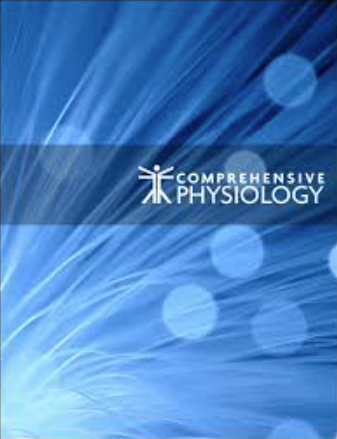下载PDF
{"title":"通过体感反馈控制哺乳动物的运动","authors":"Alain Frigon, Turgay Akay, Boris I Prilutsky","doi":"10.1002/cphy.c210020","DOIUrl":null,"url":null,"abstract":"<p><p>When animals walk overground, mechanical stimuli activate various receptors located in muscles, joints, and skin. Afferents from these mechanoreceptors project to neuronal networks controlling locomotion in the spinal cord and brain. The dynamic interactions between the control systems at different levels of the neuraxis ensure that locomotion adjusts to its environment and meets task demands. In this article, we describe and discuss the essential contribution of somatosensory feedback to locomotion. We start with a discussion of how biomechanical properties of the body affect somatosensory feedback. We follow with the different types of mechanoreceptors and somatosensory afferents and their activity during locomotion. We then describe central projections to locomotor networks and the modulation of somatosensory feedback during locomotion and its mechanisms. We then discuss experimental approaches and animal models used to investigate the control of locomotion by somatosensory feedback before providing an overview of the different functional roles of somatosensory feedback for locomotion. Lastly, we briefly describe the role of somatosensory feedback in the recovery of locomotion after neurological injury. We highlight the fact that somatosensory feedback is an essential component of a highly integrated system for locomotor control. © 2021 American Physiological Society. Compr Physiol 11:1-71, 2021.</p>","PeriodicalId":10573,"journal":{"name":"Comprehensive Physiology","volume":"12 1","pages":"2877-2947"},"PeriodicalIF":5.2000,"publicationDate":"2021-12-29","publicationTypes":"Journal Article","fieldsOfStudy":null,"isOpenAccess":false,"openAccessPdf":"https://www.ncbi.nlm.nih.gov/pmc/articles/PMC9159344/pdf/nihms-1806705.pdf","citationCount":"0","resultStr":"{\"title\":\"Control of Mammalian Locomotion by Somatosensory Feedback.\",\"authors\":\"Alain Frigon, Turgay Akay, Boris I Prilutsky\",\"doi\":\"10.1002/cphy.c210020\",\"DOIUrl\":null,\"url\":null,\"abstract\":\"<p><p>When animals walk overground, mechanical stimuli activate various receptors located in muscles, joints, and skin. Afferents from these mechanoreceptors project to neuronal networks controlling locomotion in the spinal cord and brain. The dynamic interactions between the control systems at different levels of the neuraxis ensure that locomotion adjusts to its environment and meets task demands. In this article, we describe and discuss the essential contribution of somatosensory feedback to locomotion. We start with a discussion of how biomechanical properties of the body affect somatosensory feedback. We follow with the different types of mechanoreceptors and somatosensory afferents and their activity during locomotion. We then describe central projections to locomotor networks and the modulation of somatosensory feedback during locomotion and its mechanisms. We then discuss experimental approaches and animal models used to investigate the control of locomotion by somatosensory feedback before providing an overview of the different functional roles of somatosensory feedback for locomotion. Lastly, we briefly describe the role of somatosensory feedback in the recovery of locomotion after neurological injury. We highlight the fact that somatosensory feedback is an essential component of a highly integrated system for locomotor control. © 2021 American Physiological Society. Compr Physiol 11:1-71, 2021.</p>\",\"PeriodicalId\":10573,\"journal\":{\"name\":\"Comprehensive Physiology\",\"volume\":\"12 1\",\"pages\":\"2877-2947\"},\"PeriodicalIF\":5.2000,\"publicationDate\":\"2021-12-29\",\"publicationTypes\":\"Journal Article\",\"fieldsOfStudy\":null,\"isOpenAccess\":false,\"openAccessPdf\":\"https://www.ncbi.nlm.nih.gov/pmc/articles/PMC9159344/pdf/nihms-1806705.pdf\",\"citationCount\":\"0\",\"resultStr\":null,\"platform\":\"Semanticscholar\",\"paperid\":null,\"PeriodicalName\":\"Comprehensive Physiology\",\"FirstCategoryId\":\"3\",\"ListUrlMain\":\"https://doi.org/10.1002/cphy.c210020\",\"RegionNum\":2,\"RegionCategory\":\"医学\",\"ArticlePicture\":[],\"TitleCN\":null,\"AbstractTextCN\":null,\"PMCID\":null,\"EPubDate\":\"\",\"PubModel\":\"\",\"JCR\":\"Q1\",\"JCRName\":\"PHYSIOLOGY\",\"Score\":null,\"Total\":0}","platform":"Semanticscholar","paperid":null,"PeriodicalName":"Comprehensive Physiology","FirstCategoryId":"3","ListUrlMain":"https://doi.org/10.1002/cphy.c210020","RegionNum":2,"RegionCategory":"医学","ArticlePicture":[],"TitleCN":null,"AbstractTextCN":null,"PMCID":null,"EPubDate":"","PubModel":"","JCR":"Q1","JCRName":"PHYSIOLOGY","Score":null,"Total":0}
引用次数: 0
引用
批量引用

 求助内容:
求助内容: 应助结果提醒方式:
应助结果提醒方式:


